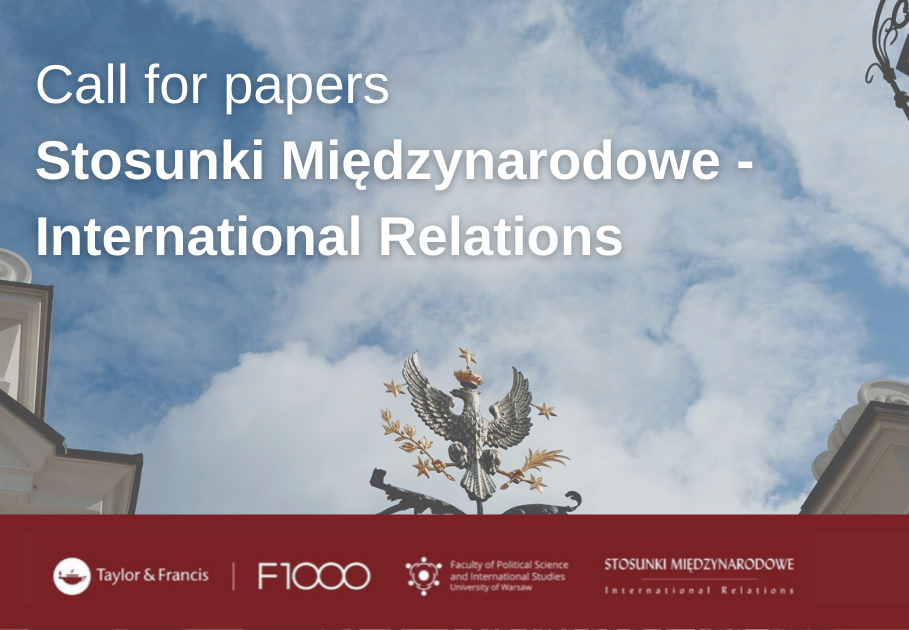O czasopiśmie
Cele i zakres czasopisma
Zasady Etyki
Polityka Prywatności (RODO)
Zespół Redakcyjny i Rada Redakcji
Kontakt
Bieżący numer
Archiwum
Dla Autorów
Call for Papers
Ogólne wytyczne dla Autorów
Struktura tekstów
Wymogi edytorskie
Procedura recenzowania
Zasady recenzowania
Dla Recenzentów
Procedura recenzowania
Zasady recenzowania
Ogólne wytyczne dla Recenzentów
Zasady publikowania/
Kodeks etyczny
Kontakt
ARTYKUŁ NAUKOWY
International Organizations for Rail Transport:
Genesis and Evolution
1
University of Warsaw
Data publikacji: 31-12-2017
Stosunki Międzynarodowe – International Relations 2017;53(4):219-233
SŁOWA KLUCZOWE
STRESZCZENIE
This article addresses the origins and evolution of international organizations
dedicated to international rail transport. From the beginning of rail history, most
of the railway networks in Europe were built by numerous private companies,
which continuously competed and collaborated with each other within domestic
transport as well as international transport.
European railway companies made connections across borders based on personal
and financial network relationships and established various types of agreements
and unions to make international traffic possible. This coalition allowed them to
jointly operate member networks, including running direct trains and establishing
tariff agreements. Since international transport has grown in size and complexity,
international railway organizations have continuously evolved.
This study proceeds as follows: the first section outlines the beginnings and
development of international rail transport organizations. With the expansion
of the rail network in Europe, international cooperation in the field of railways
occurred early in the 19th century. This mainly took the form of bilateral or
multilateral agreements or even treaties among the States. Initially, these agreements
affected the establishment of international organizations. The second section draws
out international organizations between the First World War and the Second World
War. In the interwar period, the existing organizations continued to expand their
scope of activities and new organizations were founded. The third section examines
the impact of the Cold War on international rail organizations. During the Cold War,
many organizations were established in Western Europe, with active international
railway cooperation. In Eastern Europe, a new international organization was
established under the influence of the Soviet Union. The fourth section explains
changes in international organizations after the Cold War. After the collapse
of the Soviet Union, the existing organizations steadily adapted themselves to
changes in the political, economic, social, cultural and technological environments.
Because of these various changes, new international organizations also emerged.
Udostępnij
ARTYKUŁ POWIĄZANY
Przetwarzamy dane osobowe zbierane podczas odwiedzania serwisu. Realizacja funkcji pozyskiwania informacji o użytkownikach i ich zachowaniu odbywa się poprzez dobrowolnie wprowadzone w formularzach informacje oraz zapisywanie w urządzeniach końcowych plików cookies (tzw. ciasteczka). Dane, w tym pliki cookies, wykorzystywane są w celu realizacji usług, zapewnienia wygodnego korzystania ze strony oraz w celu monitorowania ruchu zgodnie z Polityką prywatności. Dane są także zbierane i przetwarzane przez narzędzie Google Analytics (więcej).
Możesz zmienić ustawienia cookies w swojej przeglądarce. Ograniczenie stosowania plików cookies w konfiguracji przeglądarki może wpłynąć na niektóre funkcjonalności dostępne na stronie.
Możesz zmienić ustawienia cookies w swojej przeglądarce. Ograniczenie stosowania plików cookies w konfiguracji przeglądarki może wpłynąć na niektóre funkcjonalności dostępne na stronie.



